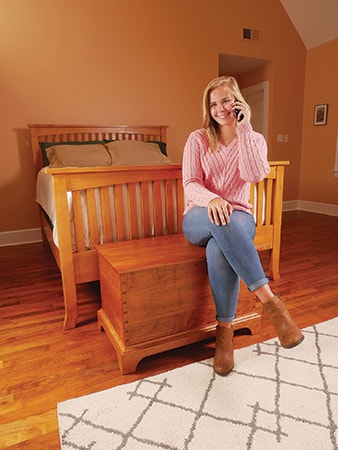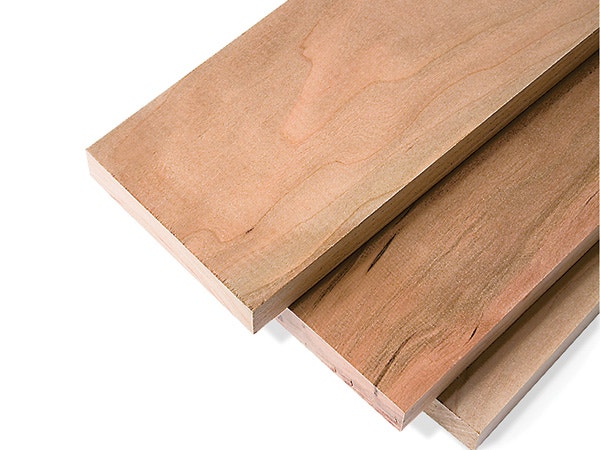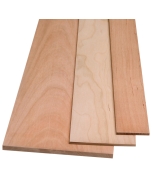Black Cherry: Prunus Serotina
Cherry lumber has been one of my favorite kinds of wood ever since I first smelled it being machined in my father's cabinet shop. Its pungent and distinctively fruity smell is just one of the pleasures that accompanies the working of this durable and beautiful hardwood.
In my mind, cherry is nearly the perfect hardwood for furniture and cabinetry. Its natural color is rich but not too dark. It is a "Goldilocks" wood in terms of its hardness — that is to say, not too hard and not too soft — in other words, it is just right. It machines easily, glues up well and, when first treated with a coat of linseed oil to help pop the grain, looks spectacular with just a clear finish applied. I am, in fact, such a fan of this wood that I am flabbergasted that some woodworkers shun cherry as a second-rate species. They don't like the fact that cherry darkens over time as it is exposed to light. Some folks don't like the characteristic black pitch pockets, tiny pin knots and creamy-colored sapwood that are allowed in top quality cherry lumber. The most common complaint is that cherry burns easily as it is cut, routed and shaped.
Beautiful Flaws

To me, the beauty of cherry lumber is actually created by the combination of all of its quirks and qualities. The pitch pockets and pin knots add detail and texture to the figure of the wood. Its predisposition to darken over time adds a richness to the patina of the wood that is entirely pleasing to my aesthetics.
And cherry is not a one-act wood. Naturally growing cherry produces a variety of figure and grain patterns that give woodworkers an array of options to choose from. Curly figured cherry is not uncommon and combines the best qualities of curly maple with the hues of cherry. Quartersawn cherry presents a more subdued overall figure — a lovely, subtle "silk" pattern that runs across the width of the boards. And finally, flat-sawn cherry — one of the few flatsawn lumbers I recommend — has pin knots and pitch pockets to add a dimension of texture that lifts it out of the plain Jane category of some other hardwoods.
Shop Score Card
|
Uses: Furniture, flooring, paneling and veneer, musical instruments, turned vessels. Hardness: Moderately hard and strong. Country of Origin: Native to the Eastern United States in temperate hardwood forests. Workability: Works well with both hand and power tools. Easily burned by router bits and saw blades. Carves exceedingly well. Fastens and glues well. Finishing: Oil finishes highlight its grain and color. Curly grain will splotch when stained. Clear finishes are recommended. Cost: Moderate to High. Bargains can be found at local sawmills. |
Keep the inspiration coming!
Subscribe to our newsletter for more woodworking tips and tricks


